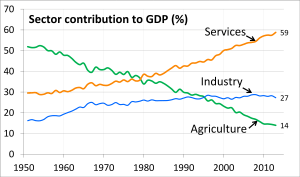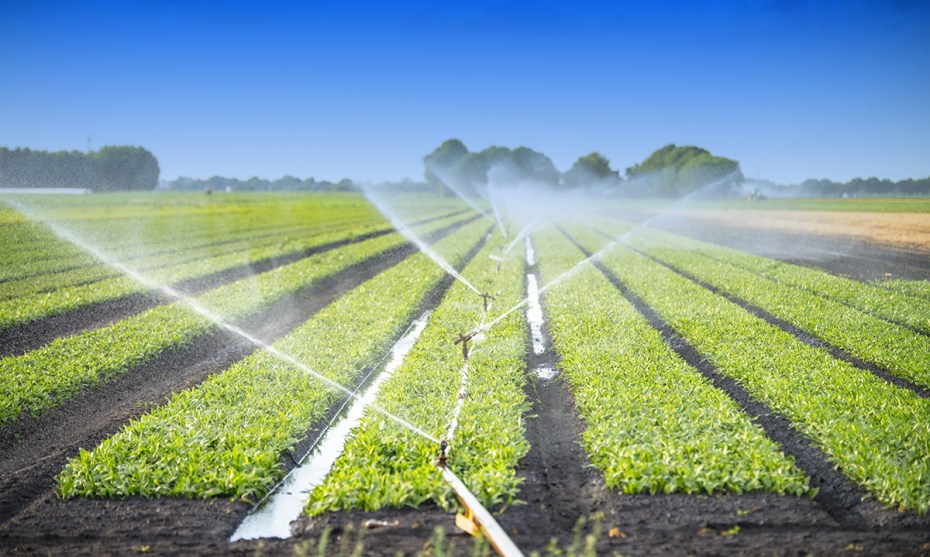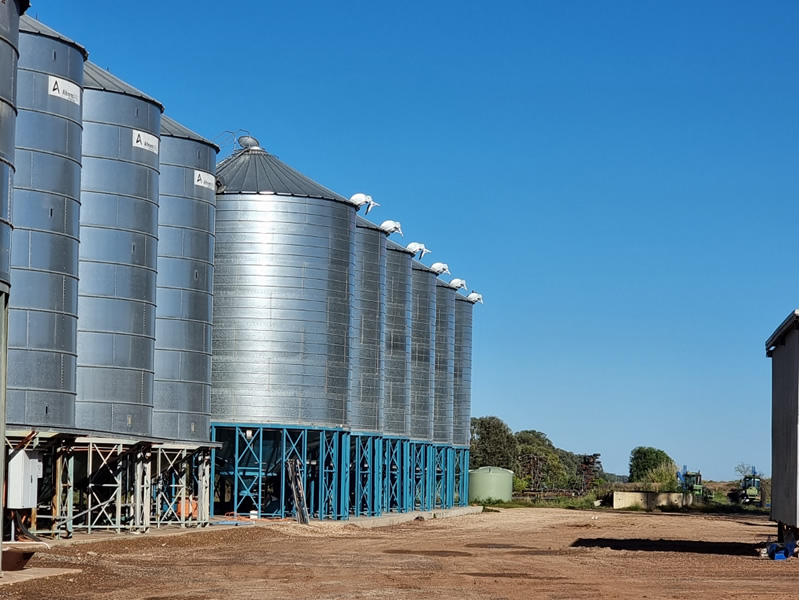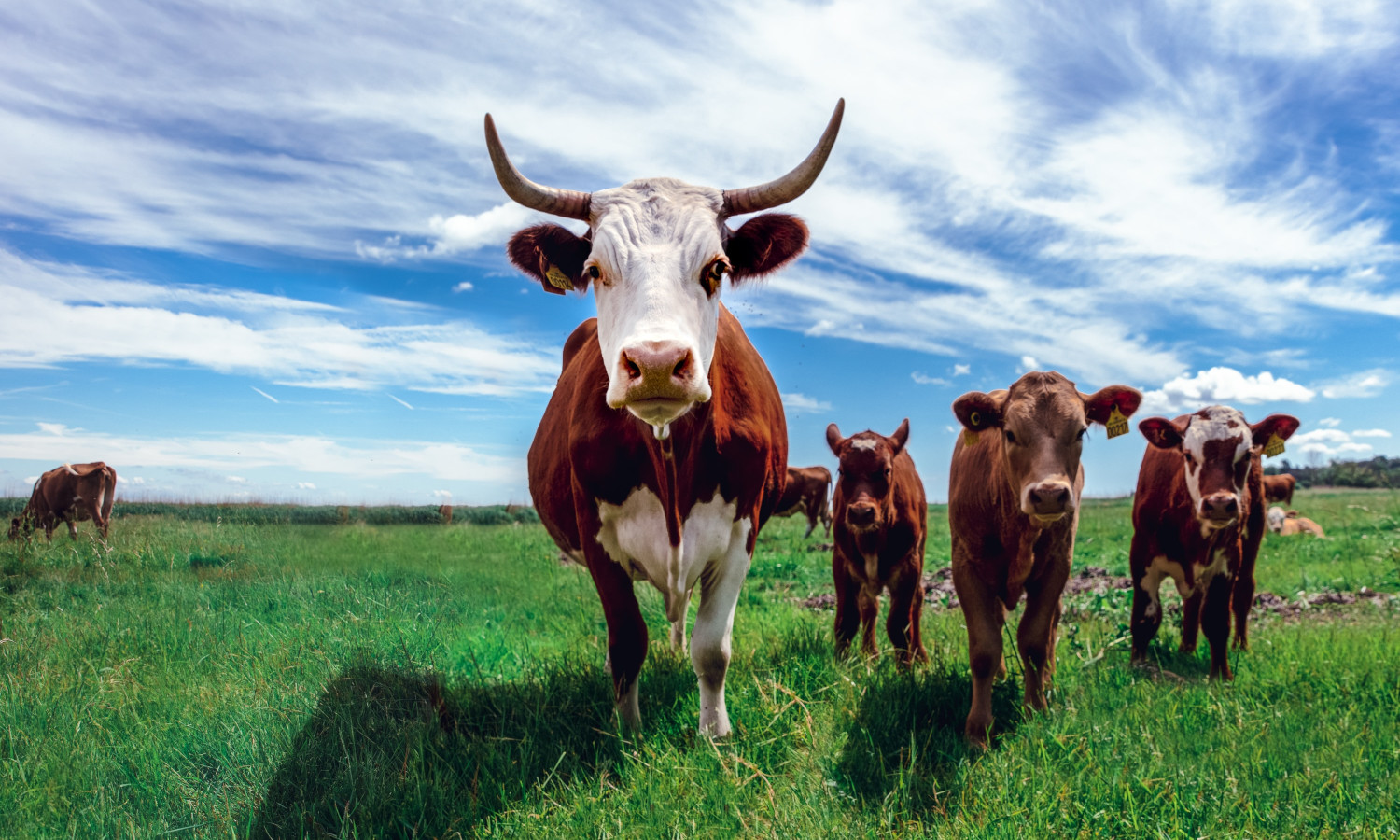
Countries that have developed successfully have shifted resources from agriculture to manufacturing. The Green Revolution benefited most regions of the world, particularly East Asia and the Pacific, where cereal yields quadrupled between 1960 and 1990. But Africa missed out on this and the continued lack of progress in agricultural productivity has been blamed for holding back the region’s overall economic growth.

Agricultural ecosystems provide humans with food, forage, bioenergy and pharmaceuticals and are essential to human wellbeing. These systems rely on ecosystem services provided by natural ecosystems, including pollination, biological pest control, maintenance of soil structure and fertility, nutrient cycling and hydrological services. Preliminary assessments indicate that the value of these ecosystem services to agriculture is underappreciated.

Irrigation is the process through which controlled amount of water can be supplied through artificial means such as pipes, ditches, sprinklers etc. the main objectives of irrigation systems is to help agricultural crop growth, landscape maintenance, reduce the effect of inadequate rainfall, ensure enough moisture essential for plant growth etc. Therefore, the importance of irrigation systems is very high.
Main importances of irrigation supplies are discussed below.

Poor diets in early childhood can lead to deficiencies in essential vitamins and nutrients – such as vitamin A deficiency, which weakens children’s immunity, increases their risk of blindness and can lead to death from common childhood diseases like diarrhoea.
Meeting children’s nutrient needs in early life can be challenging, and many parents face barriers to securing enough nutritious, safe, affordable and age-appropriate food for their children. These challenges are even greater during conflicts and other humanitarian crises.

Good nutrition equates to receiving enough macronutrients (proteins, carbohydrates, fats, and water) and micronutrients (vitamins and minerals) so that the body can stay healthy, grow properly, and work effectively.
Processed, sugary, high-fat, and excessively salted foods leave the body tired and unable to perform effectively. By contrast, eating fresh, natural whole foods fuels the body by providing what it needs to produce energy, promote metabolic activity, prevent micronutrient deficiencies, and promote a sense of overall health and well-being.

When you think of storing food for later, what comes to mind? Do you imagine wrapping up some leftovers, putting them in the fridge, and calling it a day? If you’re a more advanced practitioner of the art of food storage, you might fill your crisper drawer with veggies and keep a few fruits on the counter to ripen. But what else should you know about how to preserve and store food, and why does it even matter?
There are many ways to preserve and store produce that increase shelf life. Food storage if done properly saves you time, and can add flavor and nutrient value to your food.

Food storage can modify both the content and chemical form of nutrients and bioactive compounds. Moreover, it also affects their bioavailability (positively or negatively) according to storage conditions (eg. time and temperature) and the targeted compounds. Therefore, there is a need to optimize and selecting the most appropriate processing and storage conditions. The number of studies evaluating in vivo bioaccessibility and bioavailability of health-related compound during storage is scarce.

Six million children are affected by life-threatening severe acute malnutrition in West and Central Africa. Multiple factors including land and crop degradation, periodic droughts and weather-related shocks, poverty, limited access to basic food staples and essential services, and population growth, contribute to emergency levels of malnutrition in the region. Malnutrition is not only about lack of food; a combination of other causes lead to malnutrition in children, including:

Agricultural development is critically important to improving food security and nutrition. Its roles include: increasing the quantity and diversity of food; driving economic transformation; and providing the primary source of income for many of the world’s poorest people. Numerous studies show that both agricultural development and economy-wide growth are needed to improve food security and nutrition.